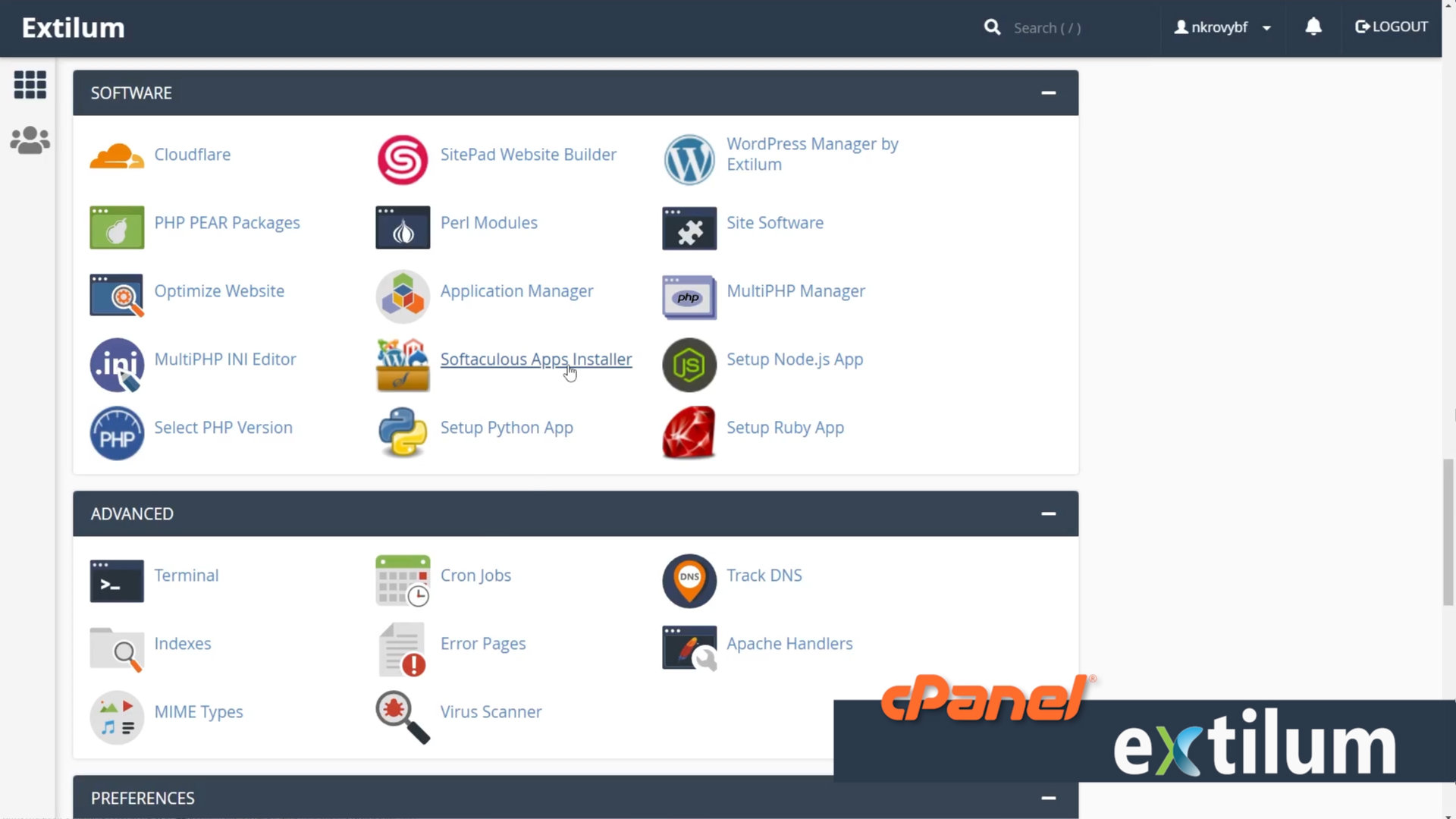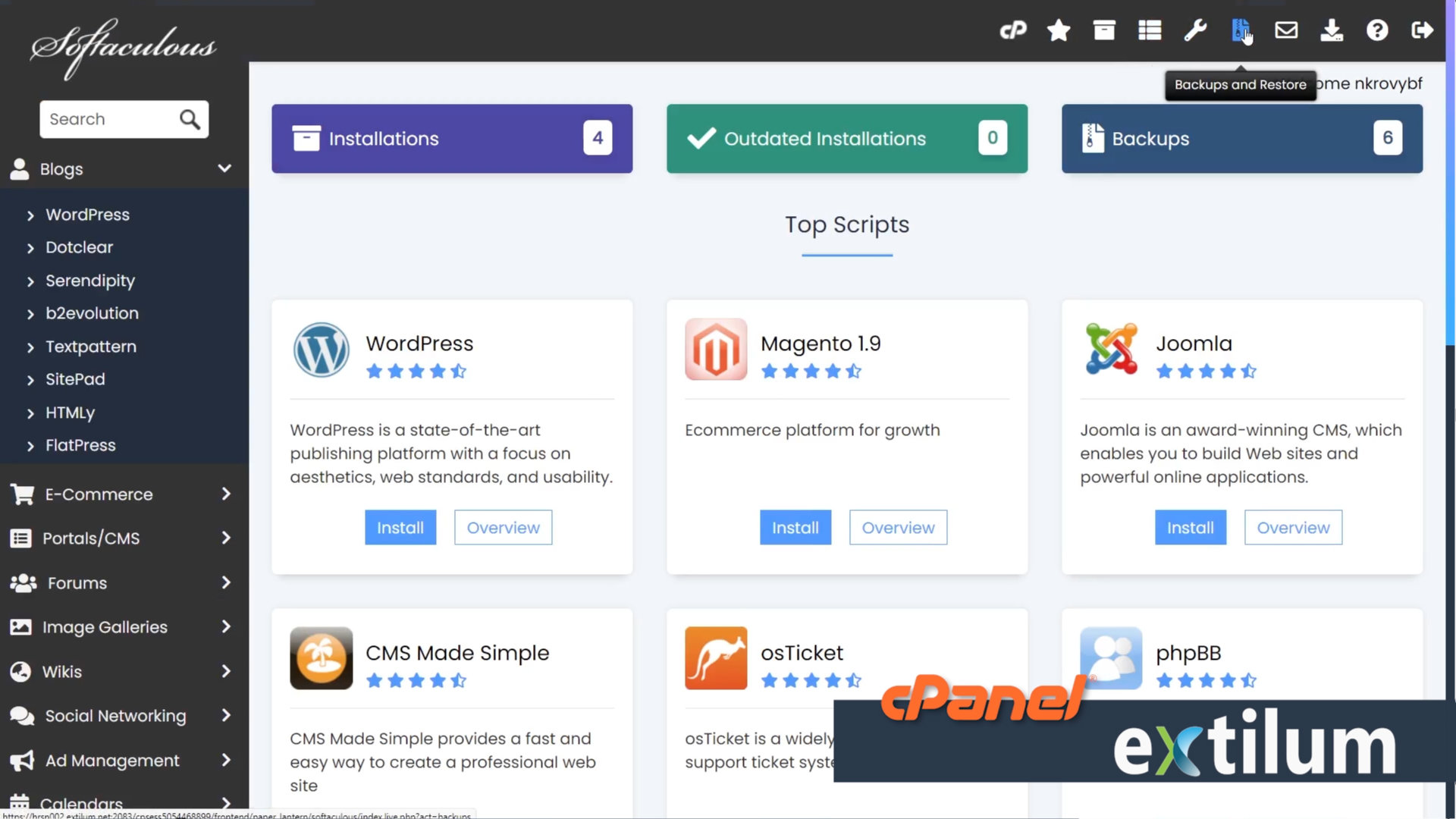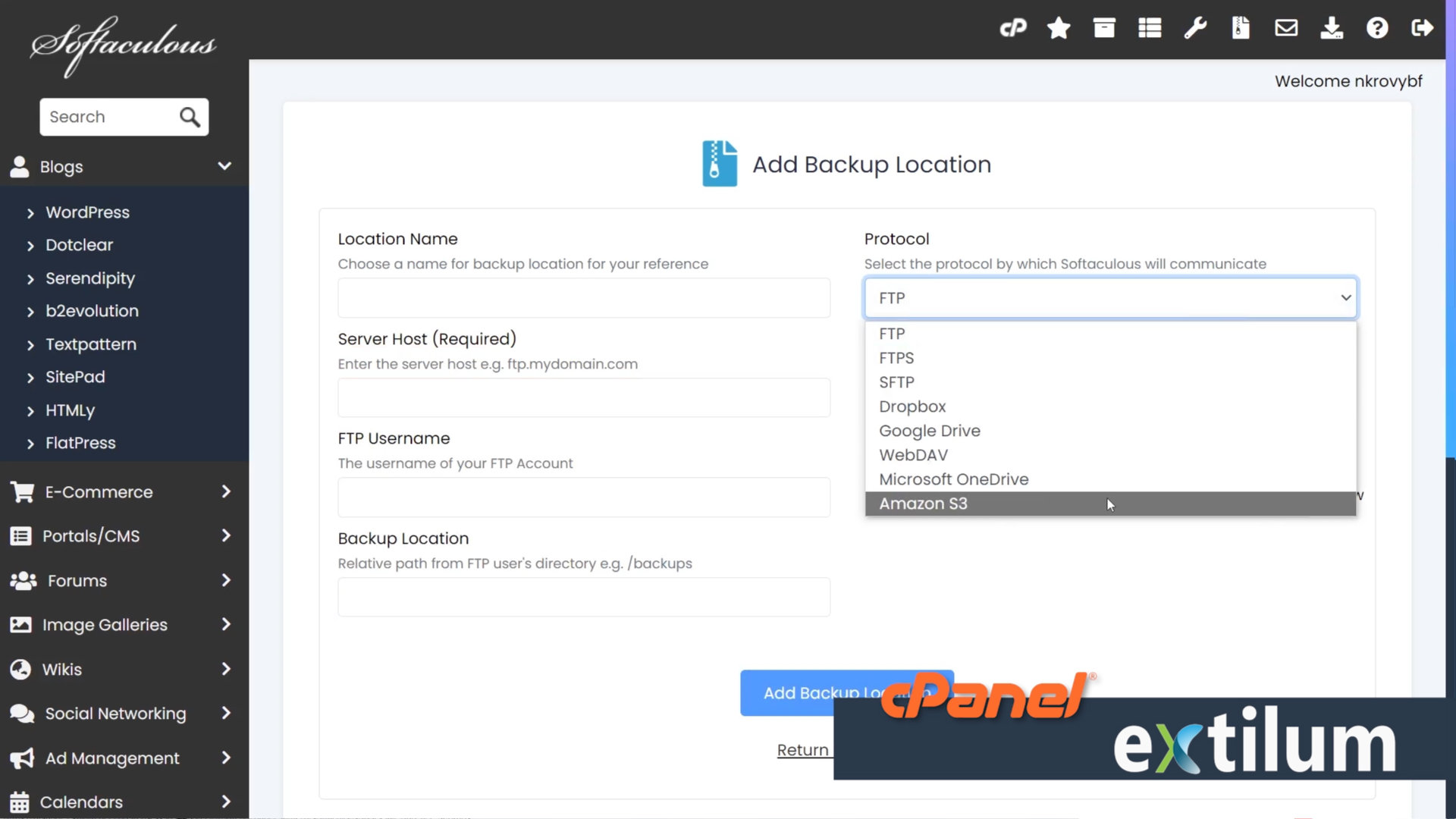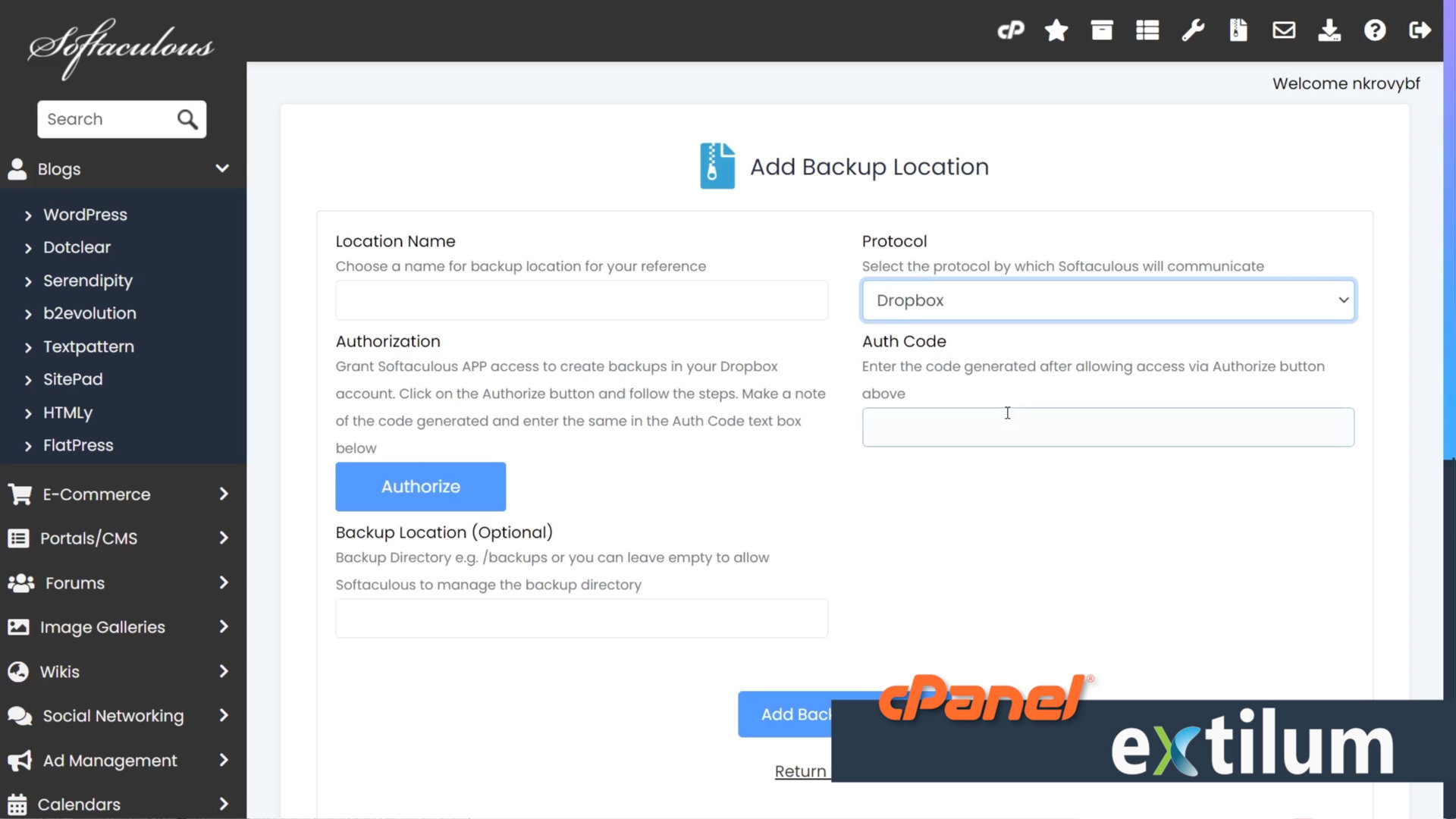Tip: Start typing in the input box for immediate search results.
-
Getting Started
-
Client area
-
- Search for a domain
- Domain Contact Information - Client Area
- Change Domain Nameservers - Client Area
- Domain Renewal - Client Area
- Domain Redirect - Client Area
- Domain Aliases - Client Area
- Manage Subdomains - Client Area
- Create an Addon domain - Client Area
- Domain Auto Renewal - Client Area
- Transfer a Domain to Extilum as Unregistered User
- Transfer a Domain to Extilum as Registered User — Client Area
- Manage a Domain - Client Area
- Domain Registrar Lock - Client Area
- Get Domain EPP Code - Client Area
- Transfer a Domain from Extilum
- DNS Management - Client Area
- Show all articles ( 1 ) Collapse Articles
-
-
- Manage Privileges for MySQL Database – Client Area
- Manage MySQL Database User - Client Area
- Manage MySQL Databases - Client Area
- Manage FTP Accounts - Client Area
- Create FTP Accounts - Client Area
- Domain Redirect - Client Area
- Domain Aliases - Client Area
- Manage DNS Records with Zone editor - Client Area
- Disk Usage - Client Area
- Manage Backups - Client Area
- File Manager - Client Area
- Use IP Blocker - Client Area
- Change PHP Version - Client Area
- Manage Subdomains - Client Area
- Unban IP Address - Client Area
- Create an Addon domain - Client Area
- Show all articles ( 1 ) Collapse Articles
-
cPanel
-
- Login to cPanel
- Login to cPanel from Extilum Client Area
- The Jupiter Theme Interface - cPanel
- Switch to Paper Lantern - cPanel
- Search - cPanel
- View Server Information for cPanel
- View Statistics - cPanel
- Change Style - cPanel
- Change Language -cPanel
- Change Password - cPanel
- Update Contact Information and Preferences - cPanel
- Add User - User Manager - cPanel
- Edit User in User Manager - cPanel
- Change Password - User Manager - cPanel
- Delete User in User Manager – cPanel
- Log out of cPanel
- Show all articles ( 1 ) Collapse Articles
-
-
-
- Accessing File Manager - cPanel
- File Manager Settings - cPanel
- Create a New File or Folder in File Manager - cPanel
- Rename a file or folder in File Manager - cPanel
- Change Permissions File Manager - cPanel
- Password Protect Directory File Manager - cPanel
- Enable Leech Protection File Manager - cPanel
- Manage indices File Manager - cPanel
- Upload and download files using File Manager - cPanel
- Compress Files using File Manager - cPanel
- Extract Files using File Manager – cPanel
- Delete and Restore in File Manager - cPanel
- Search in File Manager - cPanel
- Copy Files in File Manager - cPanel
- Move Files in File Manager - cPanel
- Edit a File Using File Manager - cPanel
- HTML Editor in File Manager - cPanel
- Show all articles ( 2 ) Collapse Articles
-
- Articles coming soon
-
-
-
-
- MySQL Databases Interface - cPanel
- Add New User to MySQL Databases - cPanel
- Change a MySQL Database User's Password - cPanel
- Rename a MySQL Database User - cPanel
- Create a MySQL Database - cPanel
- Add User to MySQL Database - cPanel
- Check and Repair MySQL Database - cPanel
- Revoke User Privileges from MySQL Database - cPanel
- Delete MySQL Database - cPanel
- Delete MySQL Database User - cPanel
- Manage MySQL Databases - cPanel
-
-
- Install WordPress using Softaculous - cPanel
- Automatically Update WordPress with Softaculous - cPanel
- Backup WordPress using Softaculous - cPanel
- Manage Backup Location Softaculous - cPanel
- Manage WordPress Automated Backups Softaculous - cPanel
- Restore WordPress Backup using Softaculous - cPanel
- Clone WordPress using Softaculous - cPanel
- Stage WordPress Website with Softaculous - cPanel
- Push WordPress From Staging to Live with Softaculous - cPanel
- Remove WordPress using Softaculous - cPanel
-
-
WordPress
-
- Install WordPress using Softaculous - cPanel
- Automatically Update WordPress with Softaculous - cPanel
- Backup WordPress using Softaculous - cPanel
- Manage Backup Location Softaculous - cPanel
- Manage WordPress Automated Backups Softaculous - cPanel
- Restore WordPress Backup using Softaculous - cPanel
- Clone WordPress using Softaculous - cPanel
- Stage WordPress Website with Softaculous - cPanel
- Push WordPress From Staging to Live with Softaculous - cPanel
- Remove WordPress using Softaculous - cPanel
-
- Install WordPress Using the WordPress Toolkit - cPanel
- WordPress Toolkit Updates and Security Status Check - Cpanel
- Manage Updates using WordPress Toolkit - cPanel
- Check WordPress Integrity with the WordPress Toolkit - cPanel
- Manage maintenance mode in the WordPress Toolkit - cPanel
- Stage WordPress with the WordPress Toolkit - cPanel
- Manage Plugins using the WordPress Toolkit - cPanel
- Manage Themes using the WordPress Toolkit - cPanel
- Manage WordPress multiple sites with WordPress Toolkit
- WordPress plugins for multiple sites - WordPress Toolkit
- WordPress Themes for multiple sites – WordPress Toolkit
- Delete or Detach WordPress site – WordPress Toolkit
- Add Existing WordPress Installations to WordPress Toolkit
- WordPress Toolkit Tools - cPanel
- Back up and Restore WordPress - WordPress Toolkit
-
-
Webmail
Manage Backup Location Softaculous – cPanel
0 out of 5 stars
| 5 Stars | 0% | |
| 4 Stars | 0% | |
| 3 Stars | 0% | |
| 2 Stars | 0% | |
| 1 Stars | 0% |
Learn How to Manage Backup Location using Softaculous in cPanel. Softaculous has the option to Backup your Installations (If you want to have a backup of your WordPress Installation). You can backup your installation Locally, FTP, Dropbox, Google Drive, WebDAV, OneDrive, or Amazon S3.
Video tutorial – Manage Backup Location Softaculous – cPanel
Step-by-step tutorial – Manage Backup Location Softaculous – cPanel
- Softaculous Apps Installer
Login to cPanel.
Tutorial: login from the Client Area or the direct link.
Find the Software section and click the Softaculous Apps Installer link.
- Softaculous dashboard
Click the Backups blue button.
or
Click the fifth icon Backups and Restore in the top Task Bar.
- Backups and Restore
Click the Manage Backups Locations button.

- Backup Locations
Click the Add Backup Location button.

- Add Backup Location
Softaculous stores backup by default on your server, this option is great if you delete or corrupt your installation.
But, The ONLY true way to ensure that your data can be restored in the event of a disaster is by having a copy of it stored in an offsite location, preferably one with high security.
Having a remote backup will allow you to keep a secure copy of your data somewhere other than your server.
Protocol
Choose where you want to set up your backup Location from the drop-down list.
- Add Remote Backup Location – FTP
Example – FTP
Location Name
Choose a name for the Backup Location for your reference.
Server Host
Enter the server host (e.g. ftp.mydomain.com) where you want to store your backups.
Protocol
Select the protocol by which Softaculous will communicate with the remote server. Default is ‘FTP’.
Port
Enter the Port to connect. Default FTP port is 21.
FTP Username
The username of your FTP Account.
FTP Password
The Password of your FTP account.
Backup Location
Relative path from FTP user’s directory where you want to store your backups e.g. /backups.
Once done, click the Add Backup Location button.
- Add Remote Backup Location – Dropbox
Example – Dropbox
Click on the Authorize button to authorize your Dropbox account with Softaculous.
You will be redirected to a series of Dropbox Authorization steps.
– Enter the login details of your Dropbox account
– You will be next prompted to allow (or deny) access to Softaculous Auto Installer APP in your Dropbox account
– Once you click on Allow, you will be provided with a code which you have to copy and paste in the Auth Code field of the Softaculous Add Backup Location Form
Once done, click the Add Backup Location button.
Related Articles
- Install WordPress using Softaculous – cPanel
- Automatically Update WordPress with Softaculous – cPanel
- Backup WordPress using Softaculous – cPanel
- Manage WordPress Automated Backups Softaculous – cPanel
- Restore WordPress Backup using Softaculous – cPanel
- Clone WordPress using Softaculous – cPanel
- Stage WordPress Website with Softaculous – cPanel
- Push WordPress From Staging to Live with Softaculous – cPanel
- Remove WordPress using Softaculous – cPanel
0 out of 5 stars
| 5 Stars | 0% | |
| 4 Stars | 0% | |
| 3 Stars | 0% | |
| 2 Stars | 0% | |
| 1 Stars | 0% |
